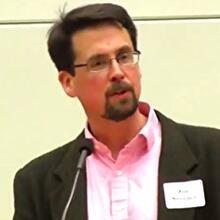Faith in the Future
This book grew out of Tom Roberts’s writing for The National Catholic Reporter over the last two decades and a series of articles still available on its Web site entitled “In Search of the Emerging Church.” The purpose of the book is to show through anecdotes, statistics, interviews and analysis the trends affecting the Catholic Church today. To anyone familiar with NCR, there are few surprises here. The Emerging Catholic Church clearly aims to chronicle the opportunities that have been lost to carry out the changes prescribed by the Second Vatican Council.
We read about the need for more lay leadership in the church and for better coordination between priests and lay leaders, the crisis of too few priests in busy dioceses, the problems that come with a clerical culture, statistics showing how many Catholics have left in recent decades and the desire for open-mindedness or questions that were once “closed.” The sexual abuse crisis also receives a great deal of attention (three out of 11 chapters).
Roberts chronicles NCR’s coverage and includes details that would seem unnecessary except that they fulfill a journalistic obligation to a story with such historical proportions. For example, it is interesting to learn that soon after Fox, who was editor at the time, published the first account of the crisis in 1985, an NCR board member called for a “no confidence” vote against him. The motion was not seconded, .
Despite all this, it is Roberts’s optimism, intertwined with his tough criticism of the church he loves, that I found most interesting. He takes the time to round out fully stories that have become too familiar and often depressing. Statistics about people fleeing the church, for instance, are often portrayed as symptom number one of our ills. Roberts explains that former Catholics, at an estimated 22 million, make up the second-largest Christian denomination in the United States today, after the Catholic Church. But his own closer analysis reveals that the retention rate of Catholics is actually 10 percent to 20 percent higher than that of most large Protestant denominations.
Roberts also points to several positive examples of vibrancy that may be a model for our future health. He tells the story of the Archdio-cese of Newark, where Mass is said each week in 60 different languages for 1.3 million Catholics, as an example of the church living out the principles of the U.S. bishops’ 1995 pastoral letter “Called and Gifted for the Third Millen-nium.”
There are those who may not read Roberts’s book be-cause they assume they already know what it will say. In fact, as I read in the second chapter Cardinal Roger Mahony’s dismissive comment about an academic report that predicted the priest shortage we are now experiencing—“That is nonsense. We are disciples of Jesus Christ. We live by God’s grace, and our future is shaped by God’s design for his church, not by sociologists”—I wondered how often Roberts and his colleagues have heard similar remarks dismissing reporters. Some people do not like hearing that most Catholics are interested in discussing women’s ordination and married priests.
I just wish Roberts had started his book in a different place, for it is only after the mid-point of the book that he begins humming toward the future, with chapters entitled “Travels on the Margins” and “Of Rummage Sales and the New Cosmology.” And he finally links all this data with what is increasingly referred to as “Emergence Christianity,” most notably by Phyllis Tickle, author of The Great Emergence. In this context, Roberts stresses the importance of contemporary teachers like Richard Rohr, O.F.M., Joan Chittister, O.S.B., and Ronald Rolheiser, O.M.I., as examples of the present, emerging moment. Best of all, Roberts contrasts institutional Catholicism with the positive ways churches in places like New Mexico are staying “close to the ground and to the people,” and he points out “how disruptive change can be” in a good way, as in certain parishes in Jersey City. That is our future.
This article also appeared in print, under the headline “Faith in the Future,” in the May 21, 2012, issue.








